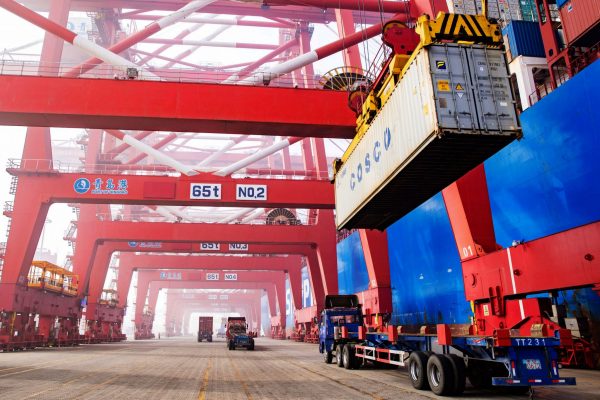The US strategy of imposing tariffs on China is not an effective tool for dealing with the US–China bilateral trade imbalance which is fundamentally caused by structural domestic factors: excessive savings over investment and spending on part of the surplus country and excessive investment and spending on part the deficit country. Reducing the imbalance would require each country to make big structural adjustments. For China, the task would be to expand its imports and increase domestic consumption while for the United States it would be to reduce expenditure and increase savings.
Further, for the United States, tit-for-tat tariff policies will have highly distortionary effects on the production and consumption of the domestic economy. Revenues collected from the imposition of tariffs can somewhat offset the losses of American producers, but they cannot fully offset them. These losses are compounded when tariffs are imposed across all goods, including intermediate goods, as has been done by the United States administration.
The United States has fundamentally misunderstood the causes and consequences of its trade deficit with China without recognising that there has already been a global rebalancing in response to underlying structural problems that has been occurring since the global financial crisis.
As part of a global rebalancing, China’s exports-to-GDP ratio fell from 35 per cent in 2006 to about 17 per cent in 2018 and its consumption contribution to GDP rose to 76 per cent in 2018. The current account surplus in GDP has fallen from 11 per cent in 2007 to less than 1 per cent in 2018. Together with a rapidly aging population and falling savings ratios, this trend will continue towards more balanced trade.
If looked at from this perspective, the trade imbalance between the United States and China is a transitory rather than permanent phenomenon. Fighting over the trade imbalance through tit-for-tat tariff and non-tariff measures is simply inconsistent with the economic interests of both the United States and China.
While US expansionary fiscal and monetary policies worked for a period in 2018-19, growth has been easing towards the second quarter of this year and business confidence and investment are weakening. During the first half of 2019, imports from China to the United States also fell by 12 per cent and US exports to China fell by 19 per cent with the total value of bilateral trade falling by 14 per cent. The United States trade deficit actually increased by 10.4 per cent year-on-year in 2018 and in the first 6 months of 2019 the trade gap widened by a further 7.9 per cent.
Engaging in a trade war did not address the bilateral trade imbalance — it weakened domestic economic growth instead.
For China, much of what has been agreed in the bilateral trade negotiations is related to domestic reform such as market entry, technology transfer, intellectual property rights protection, SOE reform and private sector development. Despite concerns over the country’s ultimate alignment with the rules and spirit of the multilateral system, these reform measures together with China’s continued efforts to make up what was missing from its accession to the WTO in 2001 and its incremental process of transition can be viewed as a movement towards a more multilateral approach.
In this interconnected world, a country cannot thrive by isolating itself from international trade, capital flows and more advanced technologies — making the notion of a ‘decoupling’ of the world’s two major economies seemingly impossible. The simple truth is that the United States can’t thrive behind a high tariff wall and China can’t successfully restructure its model of growth and development without relying on global markets and technologies.
The economic growth rates of all major and emerging economies have already begun to decelerate and a world-wide economic slowdown is now a real possibility. The IMF lowered its forecasts for global growth in both 2019 and 2020. Ending the trade war is an urgent and important step towards restoring trade as an engine for growth and, depending on how it ends, it can be a beneficial outcome for both the United States and China as well as for the global economy.
Despite the trade war having exacerbated the multilateral trading system’s already deep crisis, the WTO continues to provide a rules-based system and it needs to be maintained and strengthened as part of any win-win outcome of the trade war. The WTO’s own problems will need to be dealt with through reform and there is a need to address the very real possibility that the WTO’s dispute-settlement mechanism will be completely paralysed if the United States continues to block the appointment of judges to the Appellate Body.
Fighting over trade has spilled over into other areas of confrontation between the major powers such as those over technology, currency and geopolitics. These confrontations may shake the very foundation of the global and regional institutional architectures that have been developed since the Second World War — leading to a very uncertain world. So much is at stake. The whole world is watching.
Ligang Song is Professor and Director of the China Economy Program at the Crawford School of Public Policy, College of Asia and the Pacific, The Australian National University.

